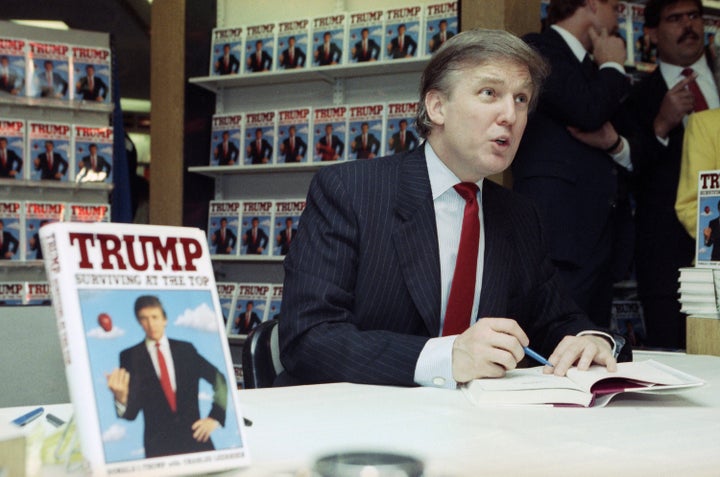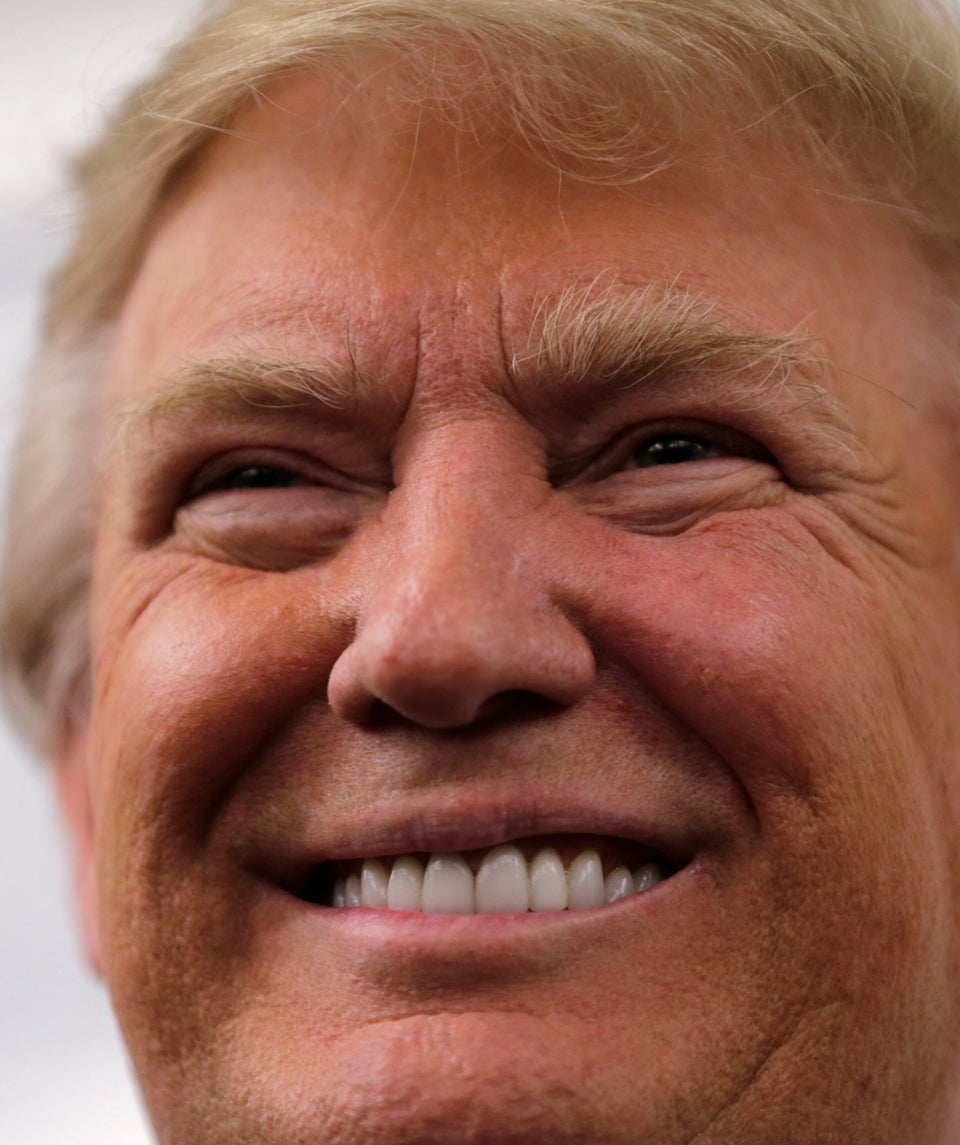On Tuesday, The New York Times scooped the world on the news that from 1985 to 1994, Donald Trump incurred the biggest business losses of any single taxpayer in American history.
What was it like for him to lose more than $1 billion in a decade? Was he perpetually ashen-faced with fear? Or smirking at the thought of outwitting the IRS “for sport,” as he said in a Wednesday morning tweet?
I happen to know, because from late 1988 to 1990, I was his ghostwriter, working on a book that would be called “Surviving at the Top.” Right in the middle of this period, I can tell you that the answer is that he was neither. Except for an occasional passing look of queasiness, or anger, when someone came into his Trump Tower office and whispered the daily win/loss numbers at his Atlantic City casinos, he seemed to be bored out of his mind.
I tend to see my time with him — the first part of it, anyway, before things started going bad in a hurry — as his “King Midas” period. I never said this to him; if I had, he probably would have thought I was suggesting he enter the muffler business. But there was a stretch of months when everything he touched turned into a deal. The banks seemed to accept the version of him depicted in his first book, “The Art of the Deal,” which we now know from his previous ghostwriter, Tony Schwartz, was entirely invented. They believed it over what they saw on his balance sheets or heard coming out of his mouth, and they never said no to his requests for more money. Often they came up with things he could say yes to before he could think of them himself. As a result, a failing real estate developer who had little idea of what he was doing and less interest in doing it once he’d held the all-important press conference wound up owning three New Jersey hotel-casinos, the Plaza Hotel, the Eastern Airlines Shuttle and a 281-foot yacht.

A real go-getter, right? But Trump’s portfolio did not jibe with what I saw each day — which to a surprisingly large extent was him looking at fabric swatches. Indeed, flipping through fabric swatches seemed at times to be his main occupation. Some days he would do it for hours, then take me in what he always called his “French military helicopter” to Atlantic City — where he looked at more fabric swatches or sometimes small samples of wood paneling. It was true that the carpets and drapes at his properties needed to be refreshed frequently, and the seats on the renamed Trump Shuttle required occasional reupholstering. But the main thing about fabric swatches was that they were within his comfort zone — whereas, for example, the management of hotels and airlines clearly wasn’t. One of his aides once told me that every room at the Plaza could be filled at the “rack rate” (list price) every night, and the revenue still wouldn’t cover the monthly payment of the loan he’d taken out to buy the place. In other words, he’d made a ridiculous deal. Neither he nor the banks had done the math beforehand. Or perhaps Trump knew it because someone had told him, but didn’t want to think about it. The one thing he is above-average at is compartmentalization.
On days when there were no broadlooms or chenilles to ponder, we would sit around his office and shoot the breeze while (as we now know) out there someplace in the real world, his businesses were hemorrhaging cash. He’d talk about the Yankees, show me pictures of Marla Maples (whom he was then romancing while still married to Ivana) and tell me obviously made-up stories, such as how he had just the other day seen a beautiful, completely naked woman on the street. “Put that in the book!” he’d say, and I’d pretend to write it down.
Occasionally famous people like Bob Hope or America’s Cup captain Dennis Conner came by for no obvious purpose, except that they were holding court and it helped Trump pass the time. Once during a lull I told him a story I thought he’d like to hear about how I had just taken the Trump Shuttle to Washington, and as we flew through a storm the plane had been struck by lightning. I commended the pilot for the way he handled the incident; he had gotten on the loudspeaker to tell the passengers what had happened and to reassure them.

But instead of being pleased to hear that, Trump, using the general number, immediately dialed the shuttle to demand to know why he hadn’t been informed about what had happened. Unfortunately it took about 10 rings before it was answered by a woman who said, “Good morning, Trump Shuttle.” By then he was purple with rage. “This ... is ... Donald ... Trump!” he growled. For the poor woman, it must have been like working at Popeye’s and getting a call from the sailor man himself. “Why did it take so long to answer this phone?” Trump demanded. Then, after bawling her out for a minute or two, he hung up abruptly, forgetting why he had called in the first place.
Each day was a string of such nonsensical moments. Once, trying to steer the conversation toward something we could actually use in our book, I asked him about his father. “We haven’t touched on him yet,” I said. “What can you tell me?”
He stared into the middle distance and began to speak. “My father...”
A long pause followed. Then he said, “Charles, put something there. I’ll look at it later.”
Trump’s King Midas period ended in early 1990, when news broke about his looming bankruptcy. At around the same time, Ivana said she was leaving him, and Mike Tyson, who had drawn so many people into Trump’s Atlantic City hotels, got knocked out by Buster Douglas in Japan. Everything was going to hell. Of course, everything had been going to hell for a a couple of years by then, but now his failure, for the first time, was public, and that made it 100 times worse. That made it real.

In the final weeks of working on the book, we attempted to explain away his disasters, such as the forced sale of his yacht. “As much as I’ve enjoyed it until now,” he (I) wrote, “and as impressive as it’s been to my casino customers, I think I’m giving up the game of who’s got the best boat. ... I don’t need it anymore, I don’t want it anymore, and, frankly, I can find better things to do with the money.”
Translation: I’m broke.
He seemed unusually subdued during this period, understandably. One day he told me a sobering story about seeing a homeless person on the street and realizing that man was better off than he was because the homeless man had nothing while he, Trump, had less than zero. Because Trump doesn’t ever walk down the street, would never notice a homeless person if he did and the story involved a degree of introspection, I knew it couldn’t be true and that he was probably parroting something he’d heard someone else say. Still, I included it in the revised introduction.
Let’s just say he didn’t like it. The harsh phone call I got began: “This ... is ... Donald ... Trump.” That’s how I knew he’d built a nicely carpeted compartment around his colossal failures, and moved on.
Charles Leerhsen (@CharlesLeerhsen) is a biographer and historian whose books include “Ty Cobb: A Terrible Beauty.”

